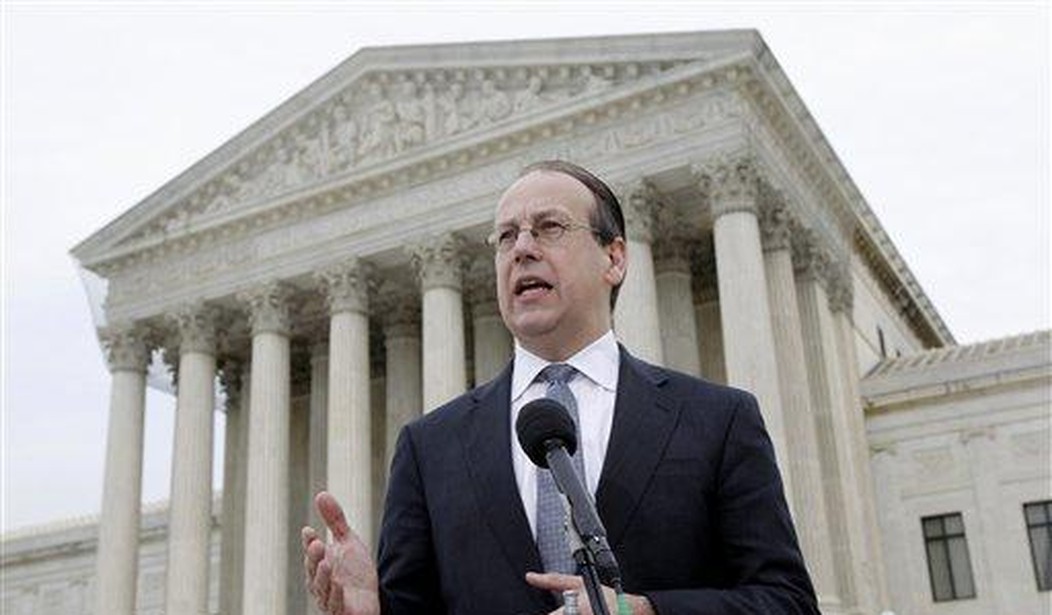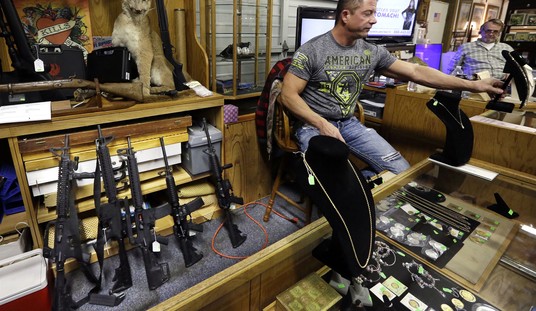Gun owners and Second Amendment supporters are blessed to have so many great legal minds at work in defense of our right to keep and bear arms, and with all of the post-Bruen litigation taking place it’s a Golden Age for amateur law nerds like me. It seems like there’s something new from the likes of Stephen Halbrook, Dave Kopel, Chuck Michel, Kostas Moros, Stephen Stamboulieh, Daniel Schmutter, Evan Nappen, and a host of other 2A attorneys almost every day; whether it’s a new case filing or another round of briefing in cases already pending in court.
One of my favorite reads of the week comes from Former Solicitor General Paul Clement, who delivered a gem of a response to Illinois Attorney General Kwame Raoul’s brief opposing a preliminary injunction preventing the state’s new ban on “assault weapons” and “large capacity” magazines from being enforced. Clement is the lead attorney for the lawsuit filed by the National Shooting Sports Foundation; one of several cases brought against the new law that U.S. District Judge Stephen McGlynn will hear on April 12th. Ahead of that hearing on the requests for a preliminary injunction both sides have been filing briefs with McGlynn, and Clement’s reply brief is beautifully succinct, wasting no time at all in getting to the heart of the matter.
Under Bruen and Heller, the irreducible minimum of the Second Amendment is this: States may not ban arms that millions of Americans possess for lawful purposes. That most basic of principles dooms HB 5471. The Court should grant Plaintiffs’ motion for a preliminary injunction.
It really is that simple, despite the attempts by Raoul to cloud the issue. The Supreme Court has said that the Second Amendment doesn’t just protect those arms that were in use in 1791, notably declaring in Caetano v. Massachusetts in 2016 that electronic weapons like stun guns were protected because they are in common use. AR-15s and other semi-automatic firearms banned by Illinois law, along with all magazines that can hold 10+ rounds, are far more common than Tasers or other electronic weapons, so why wouldn’t they too be protected by the Second Amendment’s language?
According to Raoul, the state can ban these items because they’re not “arms” that are protected by the Second Amendment, and he claims that the Supreme Court backs up the state’s position. But Clement picked apart Raoul’s argument with ease, noting that the Illinois Attorney General engaged in a fundamental misreading of what the Court has actually said.
Indeed, if the most ubiquitous firearms in America do not even fall within the ambit of the Second Amendment, then Bruen, Heller, and the Amendment itself mean nothing. The AG nonetheless contends that the firearms HB 5471 bans are not “Arms” covered by the Second Amendment because (he says) “they are not commonly used for self-defense” today and were not “in common use at the time the Second or Fourteenth Amendments were ratified.”
The first argument is analytically confused; as for the second, the Supreme Court has twice “rejected” it as “‘bordering on the frivolous.’” Caetano v. Massachusetts, 577 U.S. 411, 414 (2016) (Alito, J., concurring) (quoting Heller, 554 U.S. at 582); see id. at 411-12 (per curiam).
The AG’s first argument mixes up the order of operations Bruen clearly sets out. Under Bruen, whether something is an “Arm” and thus covered by the Amendment’s “plain text” is the opening question. Whether that thing is “in common use today” (i.e., is “typically possessed by law-abiding citizens for lawful purposes”) is the second question under Bruen.
The two questions are analytically distinct. The answer to the first question depends on whether the firearm or other implement is “a[] thing that a man wears for his defence, or takes into his hands, or useth in wrath to cast at or strike another.” The answer to the second question, by contrast, depends on whether the American people have chosen to keep and bear the “Arm” in question for lawful purposes like self-defense and hunting, or instead if it is “highly unusual in society at large.”
The AG does not contest that the myriad semiautomatic rifles, pistols, and shotguns that HB 5471 bans are “thing[s] that a man wears for his defence, or takes into his hands, or useth in wrath to cast at or strike another,” Heller, 554 U.S. at 625 (emphases added), or that they are “modern instruments that facilitate armed self-defense,” Bruen, 142 S.Ct. at 2132. Nor could he. The firearms that HB 5471 bans fit within the Second Amendment’s definition of “Arms.”
That takes care of Raoul’s first argument. Clement then proceeds to utterly demolish Raoul’s contention that because AR-15s and other semi-automatic firearms or detachable magazines weren’t in common use in 1791 or 1868 they aren’t protected.
In addition to lumping together two distinct questions (Is the banned implement a bearable arm? If so, is it in common use today?), the AG shifts the goalposts. According to the AG, what matters is whether something was “in common use when the Second and Fourteenth Amendments were ratified.”
According to the Supreme Court, however, that question matters not at all.
“[T]he Second Amendment’s … reference to ‘arms’ does not apply ‘only [to] those arms in existence in the 18th century.’” Bruen, 142 S.Ct. at 2132 (final alteration in original; quoting Heller, 554 U.S. at 582). “Just as the First Amendment protects modern forms of communications, … and the Fourth Amendment applies to modern forms of search, … the Second Amendment extends, prima facie, to all instruments that constitute bearable arms, even those that were not in existence at the time of the founding.”
Clement also chided Raoul for his “revisionist in the extreme” interpretation of Heller and Bruen decisions; calling out his repeated use of the phrase “dangerous or unusual” in trying to justify the gun and magazine ban.
This is not a slip of the pen: The AG uses the disjunctive formulation “dangerous or unusual” more than a dozen times in his brief. But the Supreme Court has recognized only a “historical tradition of prohibiting the carrying of ‘dangerous and unusual weapons.’”
As Justice Alito has explained, “this is a conjunctive test: A weapon may not be banned unless it is both dangerous and unusual.” Caetano, 577 U.S. at 417 (Alito, J., concurring). That makes sense, as all firearms are (obviously) dangerous. Dangerousness is therefore not enough; states may ban only those arms “highly unusual in society at large.”
That AG is thus forced to argue that the Supreme Court simply got it wrong. But rejecting what the Supreme Court held is not an avenue open to this Court. And what matters under Supreme Court precedent is whether the firearms and magazines HB 5471 bans “in common use today.” Because they “unquestionably” are, id., it makes exactly zero difference that states banned the public carriage of various “dangerous weapons” in the eighteenth and nineteenth centuries due to their association with violent crimes. Bruen could not be clearer about this: “[E]ven if … colonial laws prohibited [the public carriage of certain types of arms] because they were considered ‘dangerous and unusual weapons’ in the 1690s, they provide no justification for laws restricting [those types of arms] that are unquestionably in common use today.
There’s the mic drop. The only argument that the Illinois Attorney General really has is that the Supreme Court got it wrong in Heller, McDonald, Caetano, and Bruen. I’m sure that argument plays well when your audience is a bunch of anti-gun donors, but Clement has made mincemeat of it before Judge McGlynn. The arms Illinois has banned are in common use; less so than handguns perhaps but moreso than stun guns, which are also protected arms. Like every other firearm, they are dangerous, but they’re not unusual, and if the Second Amendment is to mean anything of substance at all then their possession must be protected by its language.
If you have a half-hour or so this weekend I encourage you to read Clement’s brief for yourself. I’ve highlighted a few of the juicier nuggets, but there’s still plenty of gold for you to discover for yourself.









Join the conversation as a VIP Member